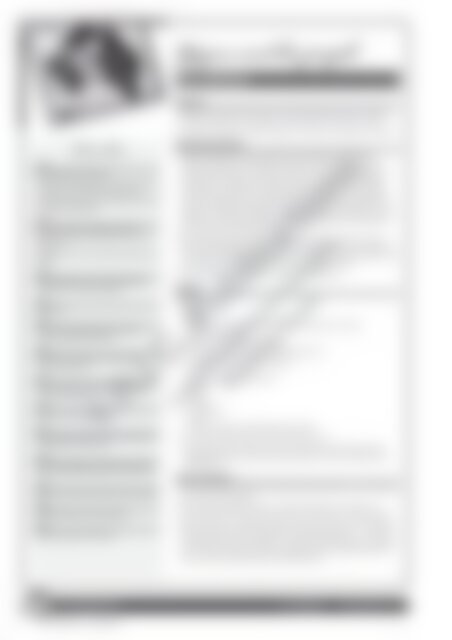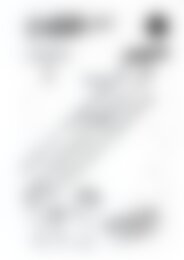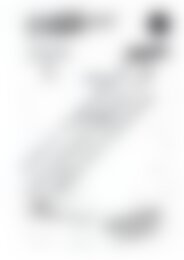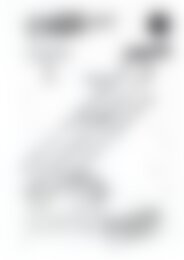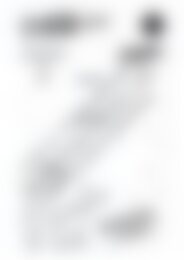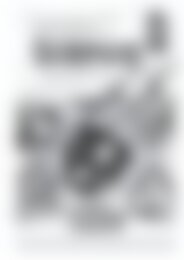RIC-6430 Primary history (Bk D)
Create successful ePaper yourself
Turn your PDF publications into a flip-book with our unique Google optimized e-Paper software.
Yagan and his people<br />
Time line<br />
1788<br />
European settlement in Australia.<br />
The fi rst confl ict between the First Fleet and Indigenous<br />
Australians occurs at Rushcutters Bay (29 May).<br />
In December, Arabanoo is the fi rst Indigenous Australian<br />
to be captured by Europeans.<br />
1789<br />
In April, an outbreak of smallpox decimates the<br />
population of Indigenous Australians living in the Port<br />
Jackson area.<br />
In November, Governor Phillip captures Bennelong and<br />
Colebee.<br />
1790<br />
Pemulwuy attacks Governor Phillip’s gamekeeper,<br />
resulting in the fi rst punitive expedition.<br />
1795<br />
Yagan is born.<br />
1799<br />
The six-year long Black Wars begin, a period of<br />
resistance against white settlement.<br />
1804<br />
Hostilities against Indigenous Australians in Van<br />
Diemen’s Land increase.<br />
1813<br />
Indigenous Australians assist colonists to fi nd a way<br />
through the Blue Mountains.<br />
1829<br />
Swan River Colony is established.<br />
1831<br />
Member of Yagan’s family group killed. Yagan involved<br />
in revenge group. Settler is killed.<br />
1832<br />
Settler killed by Nyungars. Yagan declared an outlaw.<br />
Yagan is captured. Yagan escapes from Carnac Island.<br />
1833<br />
Yagan is shot and killed. Yagan’s head is sent to Britain.<br />
1964<br />
Yagan’s head buried in Everton Cemetery.<br />
1997<br />
Yagan’s head returned to Perth, WA.<br />
Early settlement<br />
Indicators<br />
• Reads text and answers questions about the relationship between Yagan, an Aboriginal<br />
Australian resistance hero, his people and the fi rst settlers of the Swan River Colony.<br />
• Considers and explains the different viewpoints of the settlers and Yagan and his people.<br />
Worksheet information<br />
• Life before European arrival could be harsh but was relatively uncomplicated for<br />
Indigenous Australians. They managed their environment carefully and sustained it<br />
through climatic changes for more than 50 000 years. Their life began to change with<br />
the arrival of the colonists, as the majority of the new arrivals thought the Aboriginal<br />
Australians were ’uncivilised’. They did not cultivate the land, build fences or develop<br />
farms as the colonists did. To the colonists this meant that Indigenous Australians had<br />
no right to the land they had occupied for tens of thousands of years and claimed it for<br />
themselves. The effects of colonisation on Aboriginal Australians caused them to commit<br />
violent acts to demonstrate their anger at their land being taken over, their food being<br />
taken and their way of life being destroyed.<br />
• Many Aboriginal Australians began to incorporate the European way of life in order to<br />
survive. Their traditional customs and lifestyle was gradually broken down. Contact with<br />
the colonists introduced foreign diseases such as smallpox, fl u, colds and measles. These<br />
could be fatal to them as they had no immunity and many of them died.<br />
• Quiz questions relating to this section can be found on page 104.<br />
Answers<br />
Page 20<br />
1. (a) 1795<br />
(b) Nyungar<br />
(c) the south-west of Western Australia/around the Swan River near Perth<br />
(d) tall with a strong build<br />
(e) highly respected member of his people<br />
2. The relationship between them was quite peaceful at fi rst.<br />
3. 1. Nyungar/Indigenous/Aboriginal Australian<br />
2. claim<br />
3. wandering/going/travelling/moving<br />
4. fencing<br />
5. crops<br />
6. rearing<br />
7. land/property<br />
8. theirs<br />
9. Nyungars/Indigenous peoples/Aboriginal Australians<br />
4. They began to kill the settlers’ animals and pick their crops.<br />
5. Yagan was declared an outlaw after he was involved with a group that was seeking<br />
revenge after a family member was killed by a settler. Later, he was involved in more<br />
payback killings.<br />
©R.I.C. Publications<br />
Low Resolution Images<br />
Display Copy<br />
Further exploration<br />
• Discuss why Yagan is considered an Aboriginal Australian resistance hero, even though he<br />
was involved in slaying people.<br />
• After completing the activity on page 21, students could discuss or write their own<br />
opinion about each of the scenes and what they would have done in the same situation.<br />
• After the herdsman, James Keats shot Yagan and received his reward, the Perth Gazette<br />
criticised his actions and described them as ‘a wild and treacherous act … We are not<br />
vindicating the outlaw, but, we maintain, it is revolting to hear this lauded as a meritorious<br />
deed’. Discuss why the paper might have made these comments. (Note: Keats left the<br />
colony soon after, possibly because he feared being killed.)<br />
18 <strong>Primary</strong> Australian <strong>history</strong> R.I.C. Publications ® www.ricpublications.com.au<br />
ISBN 978-1-74126-687-0


